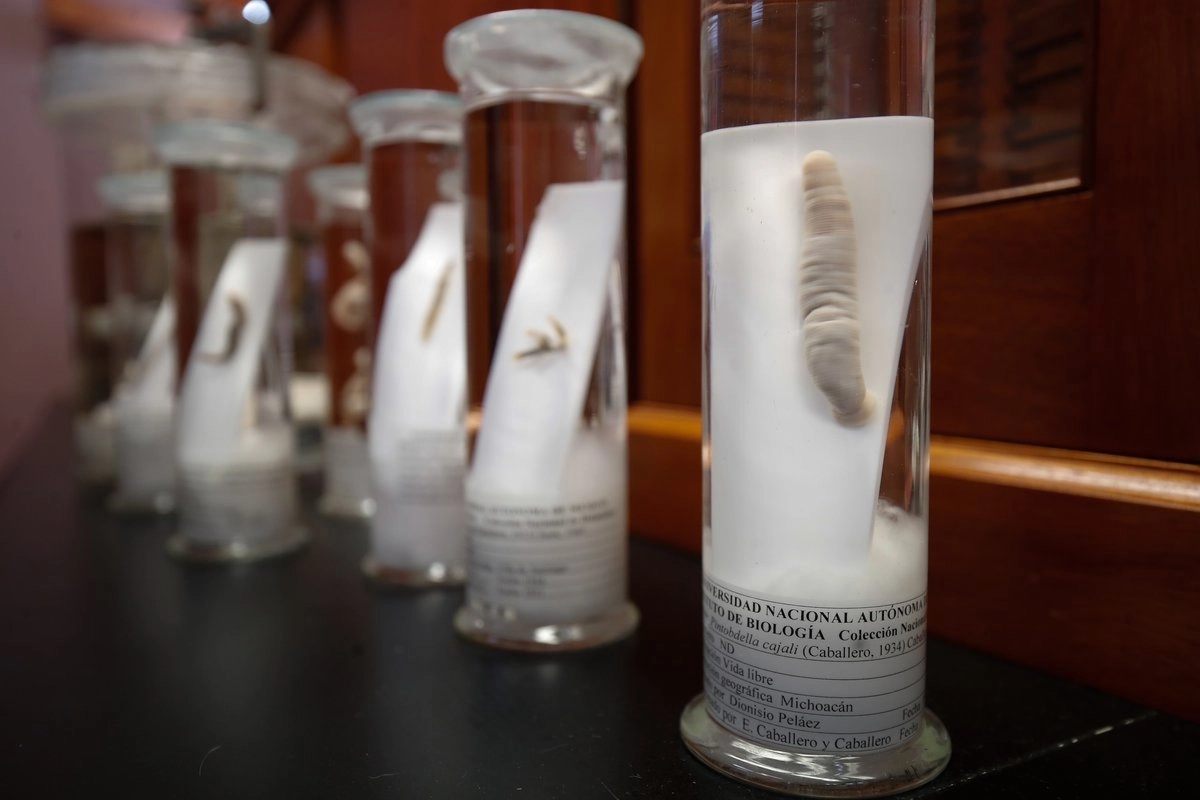A bacterium discovered in an endemic Mexican leech could help combat antibiotic resistance, according to researcher Deyanira Pérez Morales from the Center for Genomic Sciences at the National Autonomous University of Mexico (UNAM), based in Cuernavaca, Morelos.
“In these leeches, we found a bacterium from the Chryseobacterium genus that produces compounds with antibacterial activity. What’s fascinating is that it inhibits the growth of Staphylococcus aureus, a very common pathogen in hospital infections that is already resistant to multiple antibiotics,” Pérez Morales explained.
In an interview with La Jornada, the scientist described antimicrobial resistance as “the loss of effectiveness of medications (antibiotics, antivirals, antifungals) used to fight infections,” calling it a major global public health concern.
She added that the excessive and improper use of such drugs in both humans and animals has led pathogens to develop resistance—an alarming situation, as we are running out of therapeutic options to treat infectious diseases.
“There have already been reports of people dying from infections caused by bacteria resistant to all available antibiotics,” she warned.
This growing health emergency motivated Pérez Morales to focus her research on finding new antibacterial molecules in leeches. “All animals live in symbiosis with millions of bacteria, but leeches have very few bacterial species in their microbiota,” she explained. “That means their bacteria might produce compounds that prevent other bacteria from growing.”
Pérez Morales collected specimens of Haementeria officinalis from a lagoon in Coroneo, Guanajuato. Back in the lab, she extracted the contents of the leeches’ crop (a part of their intestine), identified around 40 bacterial species, and selected 10 for further study.
She then cultivated these bacteria in specific media and tested them against pathogenic bacteria using an inhibition assay. When one of the leech bacteria successfully inhibited a pathogen, it created a visible “inhibition halo” — a clear zone where the harmful bacteria could not grow.
To identify the leech-derived bacteria, their DNA was extracted and analyzed through amplification of the 16S gene, which determines bacterial genus. The researchers identified Chryseobacterium, which showed strong antibacterial activity against Staphylococcus aureus.
“What’s most remarkable is that it inhibited clinical strains of Staphylococcus aureus resistant to methicillin,” said Pérez Morales. These strains are listed by the World Health Organization (WHO) as high-priority pathogens for antibiotic research and development.
“This discovery is significant because it brings back an ancient medical practice — the use of leeches in traditional medicine in places like Egypt and Greece — but through a modern scientific lens,” she added. “In this case, it involves using a natural Mexican species in which we’ve identified an antibacterial molecule.”
Following this discovery, Pérez Morales and her graduate student Brianda Hernández are now working to isolate the molecule and study its cytotoxicity, first on laboratory larvae and later on human cells.
“This step is crucial if we want to test it as a potential new compound to treat infectious diseases in humans,” the scientist explained.
She also mentioned a possible secondary use: as a disinfectant to help eliminate antibiotic-resistant bacteria from surfaces or agricultural environments where such pathogens often persist.
“If its effectiveness and safety are confirmed, this molecule could open a new path in the fight against antibiotic resistance,” Pérez Morales concluded.



